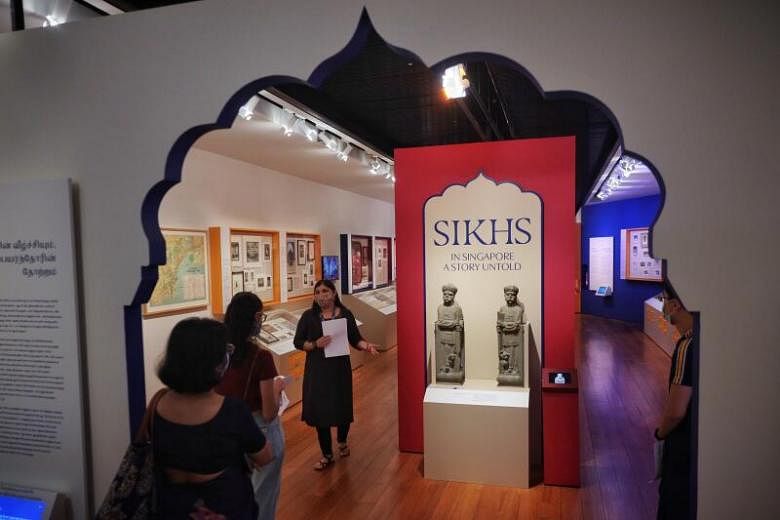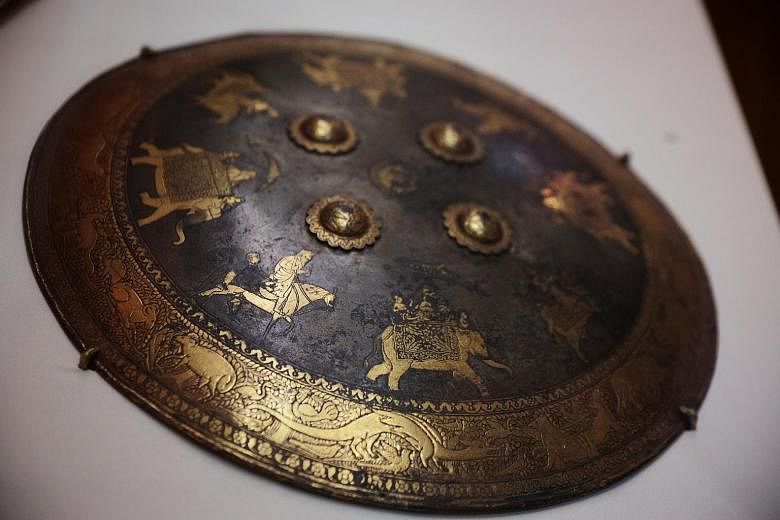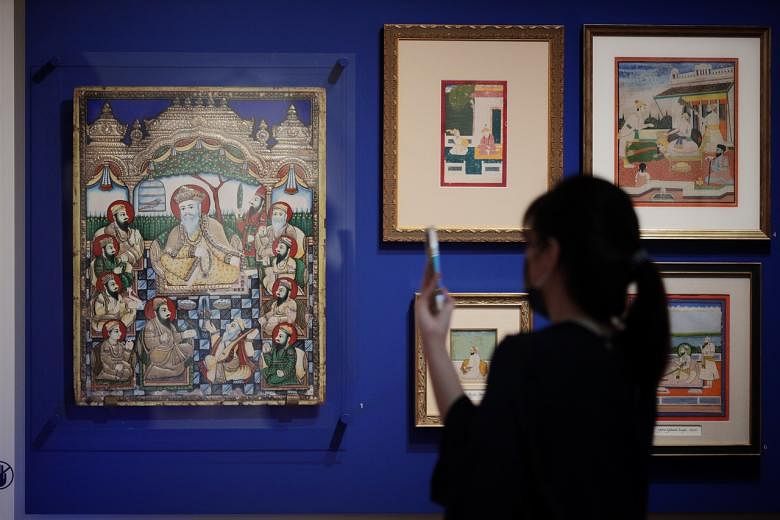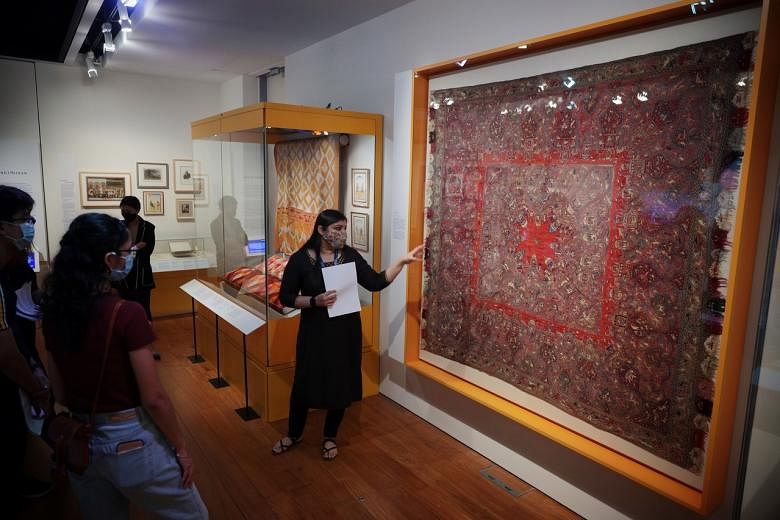SINGAPORE - An exhibition with more than 450 artefacts from Sikhs in Singapore was launched on Friday (March 26), one of the biggest showcases of the community in the country's history.
Sikhs in Singapore - A Story Untold, housed at the Indian Heritage Centre in Little India, tells of the experiences of the 13,000 followers of Sikhism here, and is mostly made up of artefacts contributed by the community over the past year.
Given the Singapore Sikh community's passion for collection, the objects loaned to the centre have significance far beyond Singapore's shores, the exhibition's curators said. A 19th century gouache on paper painting, for instance, dates back to the court of Maharaja Ranjit Singh, who united Punjab against invaders to create the first Sikh Empire in 1801.
Another draw of the exhibition are loans from the internationally renowned Khanuja family collection and the Kapany collection in the United States, which were brought here despite the challenges of transporting them amid the coronavirus restrictions.
Occupying a space of just 230 sq m, the closely packed exhibits had been whittled down from a deluge of more than 1,000 artefacts that the community offered. This signals the desire to publicly tell the stories that were previously kept private, the curatorial team said.
"Sikhs in Singapore are often reduced to their physical characteristics, or seen as just policemen or guards. We hope this (exhibition) helps people realise that there is more to know," said exhibition curator Malvika Agarwal.
"Much of the Singaporean-Sikh identity has been kept alive by being passed down through successive generations of Sikhs and so it was crucial that we worked closely with the community."
March 26 was chosen for the exhibition's launch as it marked the 140th anniversary of the Sikhs' arrival in Singapore, the Indian Heritage Centre said.
Since arriving in Singapore from Punjab in the 19th century, Sikhs have firmly established themselves here over the years.
While it is true that the first wave of immigrants were mostly men who joined the Sikh police contingent under the British colonial administration, they had later taken on roles in businesses trading textiles, foodstuff, electronics and sports goods by the first quarter of the 20th century.
Women from Punjab also came to Singapore once their husbands settled in, first taking on important custodian roles as conduits of Sikh craft and oral traditions, and later also becoming professionals who worked outside the home.
To help the public better understand the Sikhs and move beyond stereotypes, the curators commissioned photographer Afiq Omar to take pictures of 50 young Singaporean Sikh adults against local landscapes. Visitors can scan the photos on their mobile phones to listen to these young people talk about their lives and experiences in Singapore.
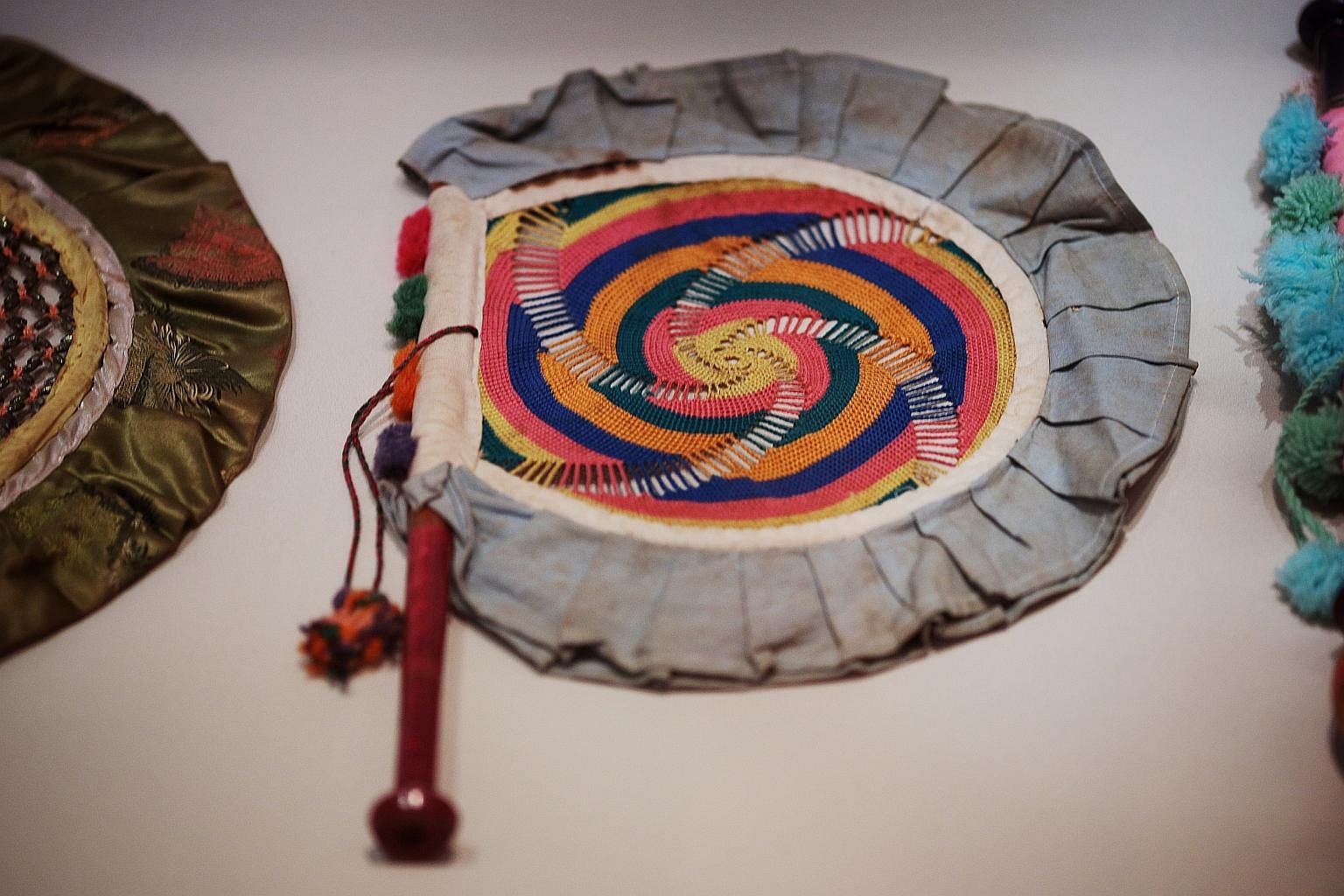
The guest-of-honour, Senior Minister Tharman Shanmugaratnam, said in a pre-recorded speech at the launch that the Sikhs - and the exhibition - epitomise the spirit of chardi kala, or the ability to maintain a positive state of mind in the face of adversity.
Just as the entire collection was successfully put together through more than 20 Zoom sessions amid the pandemic, the Sikhs have contributed to a whole range of activities and vocations in Singapore despite their tough beginnings, he added.
"It is also about how people support each other. The Sikh community has always practised that seva (service) spirit...and we have seen that very much in Singapore over a century, through the gurdwaras (Sikh temples) and through other community organisations," he said.
The exhibition will run until Sept 30.
4 things to look out for at exhibition
1. Painting of 10 Sikh gurus
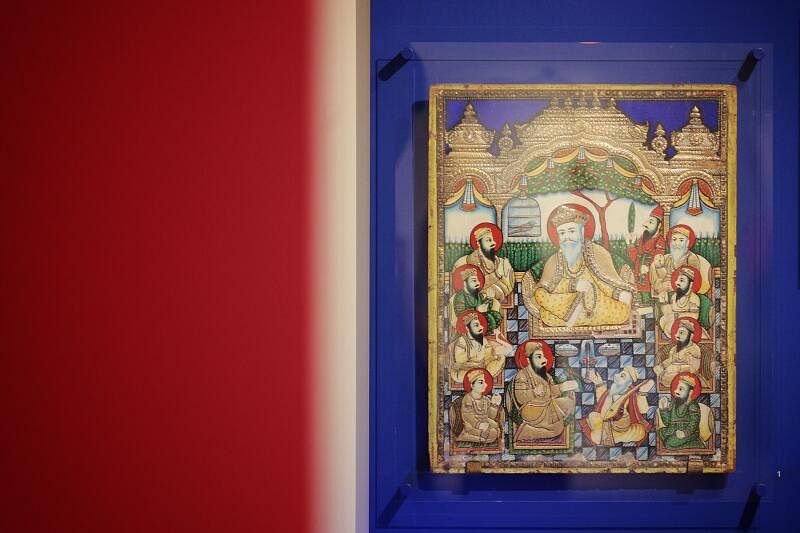
Made of wood, semi-precious stones and pigments in 19th century India, the painting is the pride of the exhibition.
It is borrowed from the renowned Khanuja family collection in the United States, and depicts the 10 spiritual guides, or gurus, of the Sikh faith. The first guru was Guru Nanak in the 15th century.
All 10 gurus spread the faith, set up centres for teaching, codified the holy book and made sure the practice of langar (free kitchen) was continued.
2. Instrument of Seva Singh Gandharab
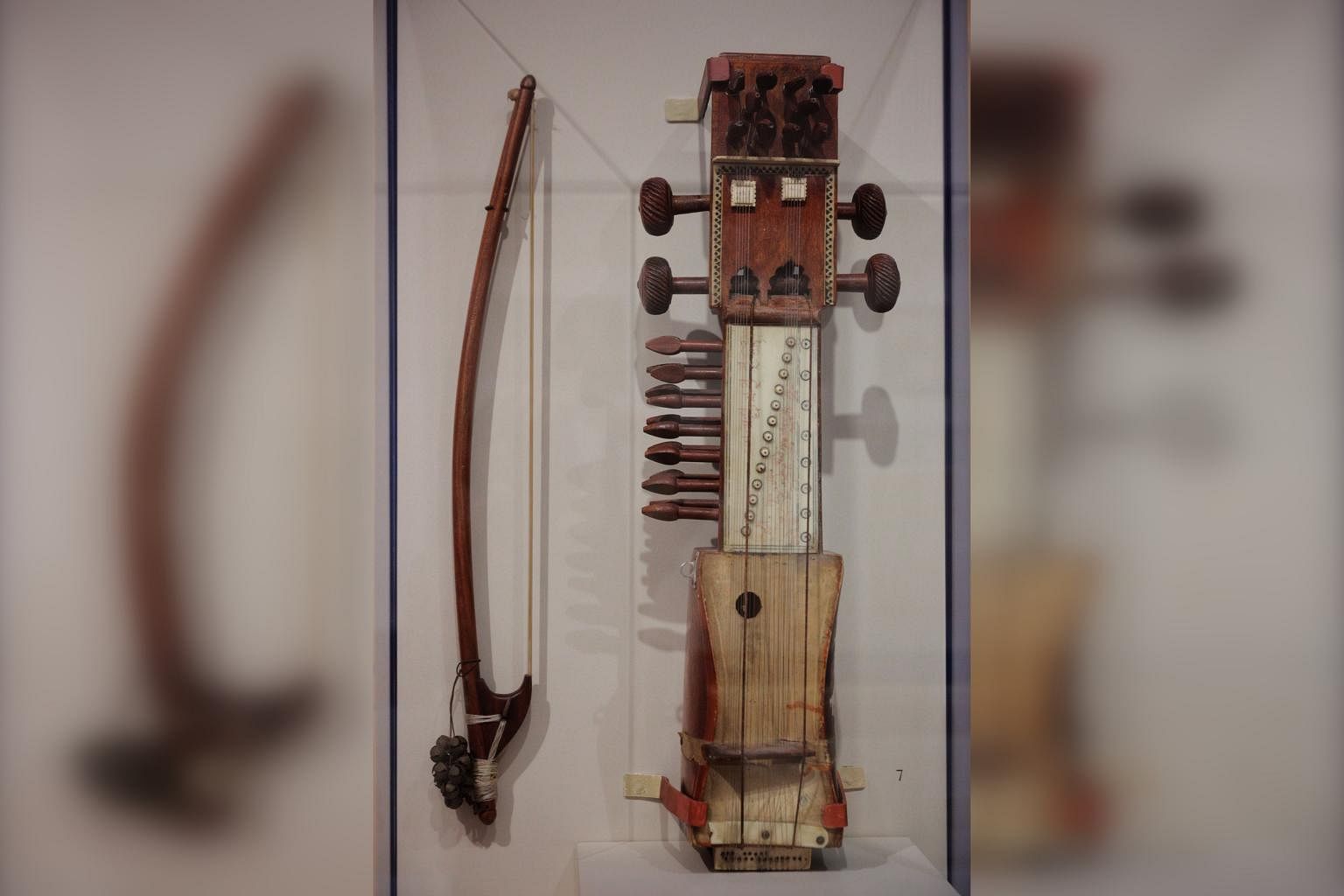
The instrument is a sarangi - a stringed instrument used in Punjabi folk music.
Born in Singapore in 1920, Seva Singh was a musician and an accomplished singer of gurbani, or Sikh hymns, and was a hospital assistant at Tan Tock Seng Hospital.
He was awarded the highest honour in India with a siropa (shawl) in the Golden Temple in Amritsar city for his cultural work and was also awarded a shield by the Indian Chamber of Commerce in Singapore.
3. A pair of Sikh guard statues from Bukit Brown Cemetery
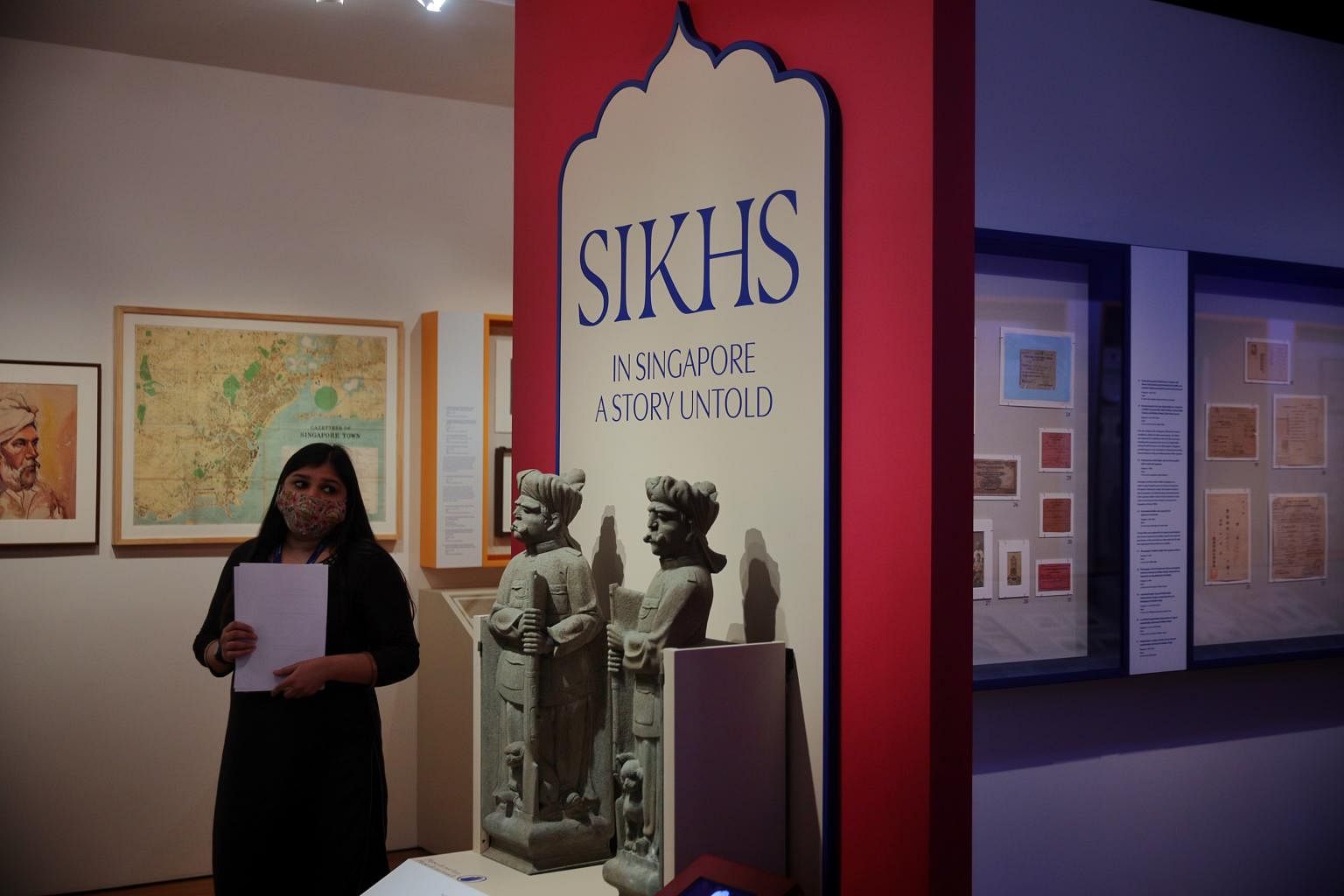
Many Chinese graves included statues of Sikh guards as grave guardians, trusting them more than their own deities and reflecting the predominant impression of Sikhs in Singapore.
This pair came from the grave of Madam Yap Woo Neo and were made in the early 20th century.
During colonial times, young Sikh men who were unable to meet recruitment guidelines of the British Sikh contingent became security guards or watchmen, or jaga, which means guard in Malay.
4. Trilogy of films
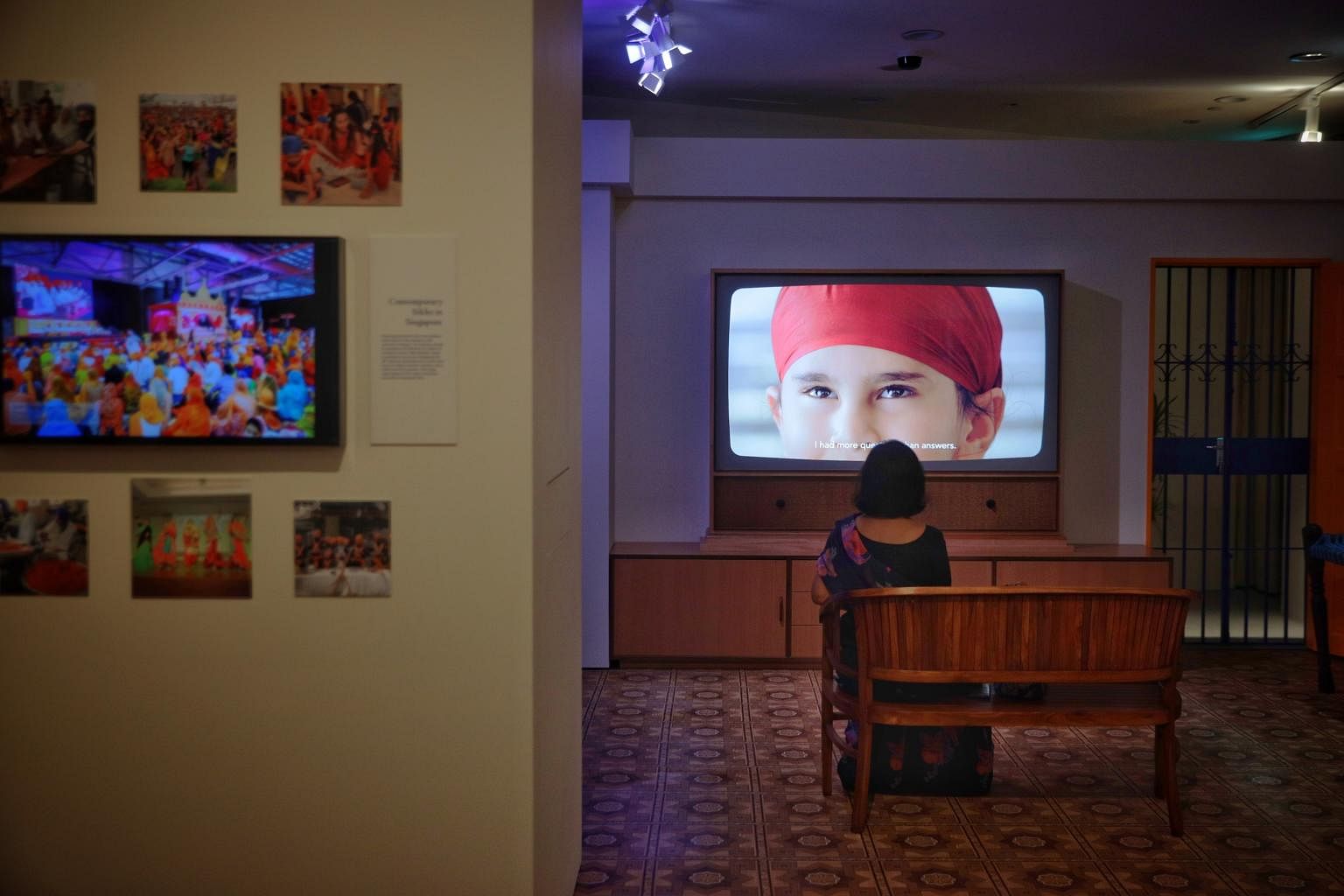
Three films specially commissioned for the exhibition are on show, presenting new reflections on what it means to be a Sikh in Singapore.
Titled Being Sikh, the trilogy focuses on the role of women, tradition and faith. The first film, for instance, tells the story of an elderly woman who witnessed many historical events and, through this, highlights women's role as agents of stability and family well-being.
The films are produced by award-winning filmmakers Upneet Kaur Nagpal and writer Balli Kaur Jaswal.
Correction note: An earlier version of this story said Mr Seva Singh was a writer of gurbani. He was a singer of gurbani. We are sorry for the error.
